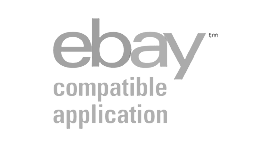Distributed order management can be a competitive advantage for organizations that understand how to do it right. But, it’s also a complicated initiative to take on.
In this post, we’ll dive into what distributed order management is, what it means to your business, and how you can get start using it as a competitive advantage.
What is distributed order management?
Distributed order management (DOM) encompasses the practices and technologies required to fulfill merchandise orders in ways that meet today’s complex business requirements.
In less jargony terms, DOM means varying how orders are fulfilled across different companies’ systems to optimize all order processes. DOM includes things like:
- Drop shipping orders to integrated suppliers
- Utilizing third-party logistics providers (like Fulfillment by Amazon)
- Splitting orders to optimize fulfillment costs
- Defining workflows that handle different types of orders different ways
- Having inventory visibility throughout the entire supply chain, even through third parties
And, that’s just scratching the surface! Distributed order management is a big idea and there are a lot of big software platforms out there that attempt to provide DOM to retailers, suppliers, and other types of merchants.
Understanding distributed order management makes more sense (or at least looks a little less complicated) when you compare it to traditional order management practices.
Traditional vs. Distributed Order Management
Distributed order management represents a transition away from static order management systems and practices that many organizations still labor through. It takes advantage of more modern technologies and business practices, and makes organizations more agile.
Here are some of the ways traditional and distributed order management systems differ:
| Traditional Order Management | Distributed Order Management |
|---|---|
| Built to satisfy the requirements of a relatively static company. | Built to support the flexibility required by today's dynamic growth demands. |
| Provides little to no visibility into third party supply chain participants. | Treats all parties in the supply chain as if they are in the same organization. |
| Tend to utilize heavy, on-premise architecture. | More likely to utilize cloud-based infrastructure and web service-based integrations. |
| Cumbersome and often inaccurate. | Efficient and far more accurate. |
Let’s walk through an example that shows these differences.
Distributed Order Management Example
You’re a retailer who sells pet supplies through three brick & mortar stores and your webstore on Shopify. You have 10 different suppliers providing you everything from dog food to cat beds to fish tank cleaner.
The holiday shopping season is coming up, so you are trying to prepare for the demand of dog toys and catnip you experience every year. Therefore you need to take stock of the inventory you have, compare it to your forecasted demand, and order more as required.
With traditional order management, here are some reasons why that’s difficult:
- You sell way more products online than you can fit into your stores by drop shipping to suppliers. How do you count your inventory for those products when you have no integration into your suppliers’ ERPs? You don’t know how many they have to sell you.
- You want to offer free shipping to be competitive. But, to avoid throwing away all your profit you need to ship efficiently. How do you figure out which supplier (or your own warehouse) is the cheapest shipping option for an order?
- You want to avoid stock-outs in your stores, and you don’t know how quickly your suppliers can provide you back-up as people buy. So, to avoid stock-outs you buy way more inventory than you need, way earlier than you need to. What else can you do?
- Some of your carriers can sell you the same products. How do you choose which supplier to buy from? How do you adjust if your first choice runs out of stock?
With a traditional order management system in place, your suppliers are a black box. Your rules about order fulfillment are set and inflexible. And, when an order is stuck in “to be fulfilled” status, you have very little visibility into its progress.
With a distributed order management system (and accompanying practices), the picture is much different:
- You know exactly how much you can drop ship of each item, because you have direct visibility into your suppliers’ current inventory levels and manufacturing forecasts.
- You optimize shipping by setting up rules that fulfill orders using the most affordable combination of vicinity to ship-to address and real-time shipping provider quote.
- Your suppliers have direct visibility into your inventory levels, so they can fulfill your stores in smaller batches, more frequently (a practice known as vendor-managed inventory).
- You set up rules to always purchase from the most affordable supplier, including shipping costs into the equation.
All the while, you’ll have much clearer visibility into order status, because all of these processes are linked in a cloud-based system.
When a customer calls up claiming that they received Fido’s new bed, but not his indestructible chew toy, you’ll be able to tell them that it’s shipping from the supplier warehouse in 48 hours and will be there before Christmas morning.
No more guessing what happened to the purchase order you sent your supplier a week ago.
Why is distributed order management difficult?
Implementing distributed order management, while certainly beneficial to your business, can be a tough task to undertake. Any time you attack something this complicated, you end up with some bumps and bruises.
The following are some of the reasons distributed order management can be difficult:
Different Companies
Every company has its own mission, culture, processes, and ideas. But, distributed order management requires that multiple companies come together around a cohesive goal.
And, that’s complicated.
Distributed order management doesn’t require that all of the organizations in the supply chain fulfill orders, manage inventory, and deliver packages the same way. But, it does require that they do so in compatible ways.
You can’t send a purchase order to a supplier that will not or cannot accept it. You can’t reconcile your three-way match if a supplier doesn’t give you accurate, timely fulfillment notifications. You can’t keep track of inventory if everyone counts it differently.
Distributed order management requires cooperation–even some standardization–across multiple companies, if it’s going to be successful
Different Systems
A supply chain consists of multiple companies, often using different technology systems to internally manage operations.
The enterprise resource planning (ERP) system is a perfect example. Maybe the retailer is using NetSuite, one of their suppliers uses SAP, another also uses NetSuite, and another uses some industry-specific ERP that no one has really heard of.
How easy do you think it’ll be for the retailer to see a holistic picture of inventory, including supplier availability to fulfill orders?
How do you think the retailer will be able to send orders to these companies electronically? Do you have to expect suppliers to manually enter orders based on information in an email?
How do you split an order in your NetSuite ERP, so part is fulfilled by you, part is fulfilled by the SAP-using supplier, and part is fulfilled by the supplier using that one-off ERP?
When a business process is required to traverse multiple technology platforms, it gets clunky. One of the primary goals (and cautions) when implementing distributed order management is to make absolutely sure that all of your systems talk to one another…and in the same language.
More Options
Distributed order management opens up your supply chain. It gives you more options about how you fulfill orders to your customers. While that is certainly an advantage, it can be a burden when you aren’t prepared for it.
It’s the paradox of choice. Not having enough choices is rigid and vulnerable. But, too many choices can cause confusion–even paralysis.
When you’ve got potentially 10 different ways you could fulfill a complicated order, it can be difficult to decide which is best. It can be cumbersome and error-prone. It can even cost you money!
With distributed order management, it’s critical to understand your goals. Are you trying to reduce costs or improve customer satisfaction? You have to define rules about how you fulfill orders, within the constraints of what your supply chain can handle. And, those rules have to be driven by your goals.
Otherwise, you just have an unpredictable supply chain that works sometimes and doesn’t work other times.
DOM is a competitive advantage.
Yes, implementing distributed order management can be a little complicated. And, you can run a profitable business without worrying about all of this–today.
But, here’s the thing…
As your competition increases, more suppliers enter the markets, more customers want different types of fulfillment options, and technology continues to stir the disruption pot– you will need to figure out how DOM fits into your business model.
Eventually a version of distributed order management will be how every merchant of reasonable size will do business. There simply won’t be a way to be competitive with a rigid, singular supply chain. And, very few (any?) organizations have the resources to own and control a supply chain from front-to-back.
You need to understand how distributed order management will be part of your business, whether you like it or not. But, I have good news for you.
So few organizations, relative to the enormous pool of merchants out there, are doing this correctly–or at all. That means figuring out how to implement distributed order management practices and technology can be an enormous competitive advantage for you.
Imagine if you could deliver twice as fast as your competition, but offer the same (or lower) prices. What if you could offer options like “buy online, pickup in store” while none of them can? What if your online store always has items in stock, when competitors constantly run out?
You would corner your market!
Distributed order management is kind of about operational efficiency and cost savings. But, ultimately, the competitive advantage that DOM can give your business is outwardly focused. It’s about the customer.
The reason Amazon is so popular is their customer experience. But, the reason Amazon can provide that customer experience is their extremely advanced supply chain and distributed order management practices.
Implementing distributed order management gives you the ability to deliver an impressive customer experience–to sell like Amazon, to a certain extent.
Imagine what that would do to your business, relative to your competition.
Getting Started with DOM
Distributed order management starts with you. Before you can rope in your suppliers and buy new technology and overhaul everyone’s processes, you need to understand your goals and current position.
What are your biggest order fulfillment problems? What financial (and otherwise) impact do they have? Why? And, what do you want to do about it?
If you try to attack distributed order management from a technology-first or feature-first perspective, you’ll get lost. There are too many consultants and software vendors out there who sell the same list of features.
Look for those that align with your company objectives and values, then do your due diligence to ensure they can meet your needs. We certainly hope you check out our order management solution, but we understand if another is more right for you.
What are your experiences with distributed order management? How did you overcome the difficulties when implementing it? I’d love to read your feedback in the comments.
More Reading
Here are some more articles on distributed order management that you might find useful:






[…] https://www.nchannel.com/blog/distributed-order-management-competitive-advantage/ […]
[…] to hop on the DOM wagon, the longer it takes you to join in, the more it might cost you in the end. nChannel sums up the current logistics reality pretty […]